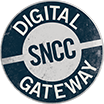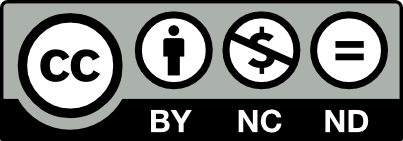Spring 1965
Selma voting rights campaign
Silas Norman was not even on SNCC’s staff the first time he was arrested in Selma, Alabama. He was working “undercover” with the Selma Literacy Project, headed by SNCC’s Maria Varela. But after the Civil Rights Act of 1964 passed in early July, the project staff decided to stop at a white drive-in restaurant called The Thirsty Boy. They were refused service. “So we decided we’d sit down, and that’s when I met [Sheriff] Jim Clark.” Norman was arrested, and protests led by local high school students spread across town.

Students march for voting rights and are placed under arrest near Selma’s George Washington Carver Homes, John Kouns, crmvet.org
Norman went on to join the SNCC Selma staff, canvassing and organizing Black residents around voter education. Then, in the winter of 1965, he became Selma’s project director, just as Martin Luther King Jr.’s arrival catapulted Selma’s movement for voting rights into headlines.
That summer, Dr. King and the Southern Christian Leadership Conference were invited to Selma by the the Dallas County Voters League because Judge James Hare had issued an injunction banning public gatherings of more than two people, squelching public protest in Selma. Mrs. Amelia Boynton traveled to Birmingham to personally invite SCLC to the city. “We did not choose them,” Andrew Young of SCLC remembered, “they chose us.”
SNCC staffers might not have agreed with Dr. King’s publicity-seeking strategies, but they believed in honoring the local people’s decisions. So, when SCLC arrived in January of 1965 to stage a nationally-geared campaign for voting rights, Silas Norman and the mostly-local SNCC staffers assisted in their efforts. At 7:00 a.m. every weekday morning, SNCC and SCLC staffers met in the SNCC office directly across from the jail to coordinate. A team of one SCLC and one SNCC staff person were assigned to jointly organize in each of city’s five wards.
Meanwhile, the Dallas County courthouse became the scene of regular demonstrations. “Most of the SNCC’s Selma staff pretty much ignored the increasingly large demonstrations,” Martha Prescod remembered, as they continued the work of voter education.
In February, Silas Norman and Fay Bellamy invited Malcolm X, who was speaking at nearby Tuskegee Institute, to come to Selma. “I don’t advocate violence, but if a man steps on my toes, I will step on his,” Malcolm X told the silent crowd of young people assembled at Brown A.M.E. Chapel, the headquarters of Selma’s Movement. “Whites better be glad that Martin Luther King is rallying the people because other forces are waiting to take over if he fails.”
Two weeks later, the voting rights campaign escalated when a white officer shot Jimmie Lee Jackson at a nighttime demonstration in nearby Marion. With Jackson’s subsequent death came plans to march his body from Selma to the state capitol in Montgomery. Questioning the effectiveness and wisdom of such a demonstration, SNCC, as an organization, voted not to participate. “We had decided we were not going to participate in the march,” explained Fay Bellamy, who left town with Stokely Carmichael and Jim Forman prior to the day of the march, fearing “that there would be a knockdown, drag out assault by the police forces on defenseless people, which we did not want to witness.”
Marchers on the Edmund Pettus Bridge during the Selma to Montgomery March, March 1965, Alabama Bureau of Tourism and Travel, ADAH
SNCC agreed that its chairman, John Lewis, an Alabama native could participate. But as an individual, not as chairman. This distinction proved meaningless. When Lewis was assaulted and beaten on the Edmund Pettus bridge on “Bloody Sunday,” the organization quickly swung into action.
A group of SNCC staffers immediately flew to Selma on a chartered plane from Atlanta. One of them, Prathia Hall, remembered a man speaking out in the church overflowing with still traumatized people. “I was out on the bridge today because I thought it was right,” he said, “But while I was on the bridge, Jim Clark came to my house and tear-gassed my eighty-year-old mother, and next time he comes to my house, I’m going to be ready.” Observing the gathering, Hall concluded, “People in the church were not feeling love for Jim Clark or for any of the white authorities,” despite SCLC efforts to get them to express love and forgiveness for their attackers.
The march from Selma finally made it to Montgomery two weeks later. Hundreds from around the country had joined it. But SNCC had turned their sights elsewhere. “We decided that it was not productive for us to fight with SCLC,” Norman explained, “So members of the staff decided to move out. We decided to move out to places where we decided they would not come.”
Sources
David Garrow, Bearing the Cross: Martin Luther King, Jr. and the Southern Christian Leadership Conference (New York: 1st Perennial Classic, 1986), 359.
Fay Bellamy Powell, “Playtime is Over,” in Hands on the Freedom Plow: Personal Accounts of Women in SNCC, edited by Faith Holsaert, et al., (Urbana: University of Illinois Press, 2010), 473-483.
Suzanne E. Smith, To Serve the Living: Funeral Directors and the African American Way of Death (Cambridge, MA: The Belknap Press of Harvard University Press, 2010), 171.
Silas Norman, Pt. H “Alabama Bound: Selma and the Lowndes County Black Panther Party, 1964-1966” We Shall Not Be Moved Conference, 1988, Trinity College.
SNCC Report on Violence in Selma, 5:30p, March 7, 1965, Lucile Montgomery Papers, Wisconsin Historical Society.




